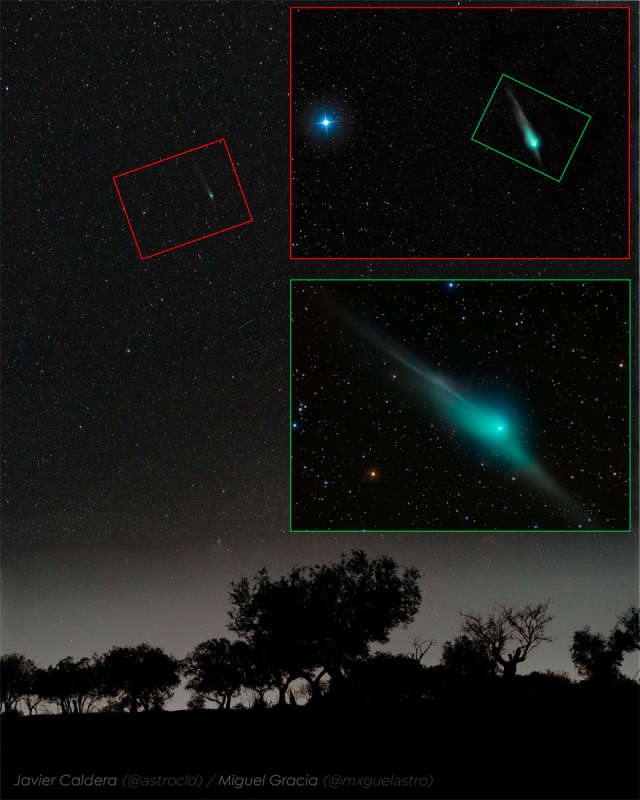
|
Credit & Copyright: Javier Caldera &
Miguel Gracia
Explanation:
Comet ZTF has a distinctive shape.
The now bright comet visiting the inner
Solar System has been showing not only a common
dust tail,
ion tail, and
green gas coma, but also an uncommonly distinctive
antitail.
The antitail does not actually lead the comet -- it is just that the head of the
comet is
seen superposed on part of the fanned-out and trailing dust tail.
The giant dirty snowball
that is Comet C/2022 E3 (ZTF) has now passed its closest to the
Sun and tomorrow will pass its closest to the Earth.
The main panel of the
featured triple image
shows how Comet ZTF looked last week to the unaided eye under a dark and clear sky
over
C÷ceres,
Spain.
The top inset image shows how the comet looked through
binoculars,
while the lower inset shows how the comet looked through
a small telescope.
The comet is
now visible all night long from northern latitudes but will
surely fade from easy observation during the next few weeks.
Comet ZTF Gallery:
Notable
Submissions to APOD
|
January February March April May June July August September October November December |
| |||||||||||||||||||||||||||||||||||||||||||||||||||||||
NASA Web Site Statements, Warnings, and Disclaimers
NASA Official: Jay Norris. Specific rights apply.
A service of: LHEA at NASA / GSFC
& Michigan Tech. U.
Based on Astronomy Picture
Of the Day
Publications with keywords: comet
Publications with words: comet
See also:
- APOD: 2025 December 1 ┴ 3I ATLAS: Tails of an Interstellar Comet
- APOD: 2025 November 25 ┴ Comet Lemmon and the Milky Way
- 3I/ATLAS: A View from Planet Earth
- APOD: 2025 November 17 ┴ Comet Lemmons Wandering Tail
- APOD: 2025 September 30 ┴ Comet Lemmon Brightens
- APOD: 2025 September 29 ┴ Two Camera Comets in One Sky
- APOD: 2025 September 26 ┴ A SWAN an ATLAS and Mars
